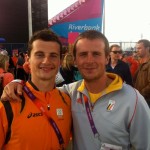1000 days and counting…
 Today (2013-11-09) it’s exactly 1000 days until the opening of the Rio 2016 Olympic Games…
Today (2013-11-09) it’s exactly 1000 days until the opening of the Rio 2016 Olympic Games…
This might seem still a long way away but we all know in every day life, time goes fast and faster. Even more than in regular life topsport requires planning ahead. This is so for players with ambitions, for teams, for clubs, for federations, for all concerned. 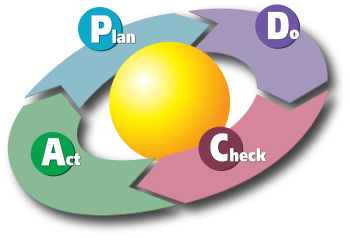 The classic “Demming circle” of “Plan, Do, Chect, Act” is something I picked up at work, but can (and should) be applied to almost every aspect of life and most certainly (top)sport.
The classic “Demming circle” of “Plan, Do, Chect, Act” is something I picked up at work, but can (and should) be applied to almost every aspect of life and most certainly (top)sport.
Those aiming to be a contender for the Games in Rio better already have a plan and be turning the Demming circle around and around… improving themselves. A 1000 days will go by very quickly!
In this light it was good to see the world governing body for our sport (FIH) publish their main international events for the next 4 years ahead of us – click here to see their announcement and planning. And watch the video announcing the next World Cup below:
In the beginning of this year I wrote an open letter to the FIH & EHF (click here to read it) regarding our frustrations about the lack of this planning ahead in our sport and proposed my ideal calendar to them. I’m happy to say I see a lot of this concept returning in the calendar proposed by the FIH today. Not everything of course has been planned to my ideal version and they only planned ahead for 4 years where I would have done this for 6 to 8 years, but still… It’s a good step, if not a major step into the right direction!
Some other issues still on the table according to me would be :
- The major issue I still have seeing their 2015-2018-cycle is it doesn’t (yet) show the planning of the continental federations included. When will the continental championships be scheduled? Because they too have an impact on the calendar of all concerned.
- When & where will the World League Rounds 1 & 2 be planned. Less important maybe for the major countries, but also those countries in the sub-top or aiming for the sub-top require planning ahead.
- Why is there still a separate Champions Trophy on the calendar? I think most (if not all) players and coaches concerned would agree it’s one tournament too much on the calendar. The brand is great, so let’s keep that but let’s call World League 4 (the final round) the Champions Trophy and we’re all happy…
- Other issues that will certainly arise have less to do with when but more with where these events will be played. I think all will understand the special position India holds in our world. I think we will all benefit from a strong(er) India, fully committed in the hockey community but the share they got from the top events to be organised is somewhat disproportional to say the least. Something to be discussed I’m sure…
But we’ve made some steps into the right direction with regards to planning! And I’m happy to see this. We all know “Rome was not build in one day” so I am sure the process of do, check and act (=adapt) following this planning will help improve the issues I still see in the future.
Therefore I’m looking forward to the 2015-2018 planning of the continental federations within the framework of the FIH and I challenge the national federations as well to question their existing competitions! I think if our European national competitions remain as is, at least we should consider playing with less teams (max 10) in the top division. But why not dare to rethink our competitions totally? From time to time it’s healthy to think outside the box. Yes, I do believe continuity is a good thing so maybe we don’t need to change it at all. But keeping things the way they are, just because it has always been like that is a sure way to become stale and obsolote. That is not what sports is about…
So let’s celebrate hockey and not be afraid to challenge it as well sometimes!

 Over enkele dagen zal een van de beste sport bestuurders ooit terugtreden als voorzitter van het IOC. Jacques Rogge, dokter, graaf… maar de enige eretitel die hij zichzelf zou toedichten is die van Flandrien zoals blijkt uit onderstaande video, tevens een van de betere interviews van de Nederlandse sportjournalist en tegenpool van Rogge, Mart Smeets.
Over enkele dagen zal een van de beste sport bestuurders ooit terugtreden als voorzitter van het IOC. Jacques Rogge, dokter, graaf… maar de enige eretitel die hij zichzelf zou toedichten is die van Flandrien zoals blijkt uit onderstaande video, tevens een van de betere interviews van de Nederlandse sportjournalist en tegenpool van Rogge, Mart Smeets. I do admire the officials at the reigns of our hockey sport. Their innovation in different areas is one way to guarantee the attractiveness of the sport and to prevent it from becoming obsolete. However another quality should also be the ability to not be afraid and turn back on decisions that have proven to be not so much an added value to the game. The most prolific example here would be the “own goal” rule of course…
I do admire the officials at the reigns of our hockey sport. Their innovation in different areas is one way to guarantee the attractiveness of the sport and to prevent it from becoming obsolete. However another quality should also be the ability to not be afraid and turn back on decisions that have proven to be not so much an added value to the game. The most prolific example here would be the “own goal” rule of course… Apparantly no one in the world understands how a shot from outside the circle, ending up in the goal, is not counted. Well I’m sorry, the rule wasn’t that hard to understand: “a ball had to be touched by an attacker inside the D (or circle) in order to be a valid goal”. If people think this is too complicated I feel sorry for them… But since some other more wel known ball-sports allow scoring from anywhere on the pitch that seemed to be a problem for spectators. So we could have changed the rules so any shot from anywhere on the pitch entering the goal should be counted and the sole purpose for the D would be the area for the keeper to use his whole body to play the ball and the area where faults would be sanctioned with a penalty corner. The “D” from our hockey game would be very similar to the “box” from football for example in that case. This would be a valid choice… I still would not like it, but it would make sense.
Apparantly no one in the world understands how a shot from outside the circle, ending up in the goal, is not counted. Well I’m sorry, the rule wasn’t that hard to understand: “a ball had to be touched by an attacker inside the D (or circle) in order to be a valid goal”. If people think this is too complicated I feel sorry for them… But since some other more wel known ball-sports allow scoring from anywhere on the pitch that seemed to be a problem for spectators. So we could have changed the rules so any shot from anywhere on the pitch entering the goal should be counted and the sole purpose for the D would be the area for the keeper to use his whole body to play the ball and the area where faults would be sanctioned with a penalty corner. The “D” from our hockey game would be very similar to the “box” from football for example in that case. This would be a valid choice… I still would not like it, but it would make sense.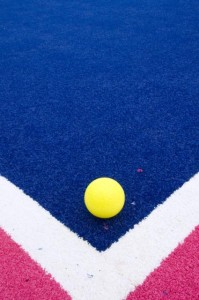 Two rule chages where tried out at the London Olympics to make it a more spectator friendly sport with regards to the issues stated above. They turned to the game of tennis where the speed of the ball and its size where also issues for TV and grand stand spectators at times… So they tried out two tennis-recipes for curing this :
Two rule chages where tried out at the London Olympics to make it a more spectator friendly sport with regards to the issues stated above. They turned to the game of tennis where the speed of the ball and its size where also issues for TV and grand stand spectators at times… So they tried out two tennis-recipes for curing this : Another recent test of the colour of the pitch was held at the recent World League for women in the UK. The test there was changing the colour of the D only. So the pitch was a regular green, but the circles were blue. I did think it was a good idea, at least worth a test to have a more distinctive circle or D. However the conditions in which it was tested were far from ideal. Anyone with some experience in these matters could have told you it is a bad idea to replace only a part of the pitch with some new turf. The new patches of turf will always be different regarding ball handling from the older existing turf and the idea behind an artificial turf is having the exact same ideal conditions of play all over the pitch. You’ll never have that if you replace only a certain part of the existing pitch, which is what they did for this World League tournament in the UK. So unfortunately this could not be a valid test for this idea. Next time the opportunity is there they should replace the entire pitch when trying out different colours for the D only.
Another recent test of the colour of the pitch was held at the recent World League for women in the UK. The test there was changing the colour of the D only. So the pitch was a regular green, but the circles were blue. I did think it was a good idea, at least worth a test to have a more distinctive circle or D. However the conditions in which it was tested were far from ideal. Anyone with some experience in these matters could have told you it is a bad idea to replace only a part of the pitch with some new turf. The new patches of turf will always be different regarding ball handling from the older existing turf and the idea behind an artificial turf is having the exact same ideal conditions of play all over the pitch. You’ll never have that if you replace only a certain part of the existing pitch, which is what they did for this World League tournament in the UK. So unfortunately this could not be a valid test for this idea. Next time the opportunity is there they should replace the entire pitch when trying out different colours for the D only. The latest test already seen in action shows some promise as well: allowing the raising of the stick above the shoulder to play the ball. They’re testing it in the EHL and have been testing it in the Wolrd League as well. Unfortunately the test seems not be prolonged to the European Championship this summer.
The latest test already seen in action shows some promise as well: allowing the raising of the stick above the shoulder to play the ball. They’re testing it in the EHL and have been testing it in the Wolrd League as well. Unfortunately the test seems not be prolonged to the European Championship this summer.


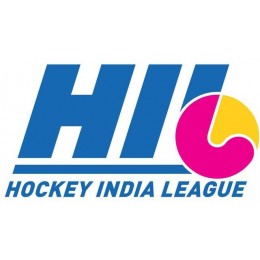

 Through the most recent phenomenon in international hockey, the HIL or Hockey India League, we once again were confronted with the diversity of the world and of course also the world of sports. And while the echo of the Indian fireworks at the HIL finals could still be heard the IOC almost cut our sport from its most prestigious podium, the Olympics. Reasons for almost being cut were , as heard through the grapevine, the image of being a sport of the Commonwealth nations but not anywhere else… Strange reasoning if that were the case. Germany, The Netherlands, Spain, Argentina, Korea are, to name but a few well performing hockeycountries at international level, not any part of the Commonwealth. Champions have come from all continents in recent history. However we must not be blind to the fact that we’re not exactly part of the major sports on a global scale and so there is still a lot of work ahead for the FIH…
Through the most recent phenomenon in international hockey, the HIL or Hockey India League, we once again were confronted with the diversity of the world and of course also the world of sports. And while the echo of the Indian fireworks at the HIL finals could still be heard the IOC almost cut our sport from its most prestigious podium, the Olympics. Reasons for almost being cut were , as heard through the grapevine, the image of being a sport of the Commonwealth nations but not anywhere else… Strange reasoning if that were the case. Germany, The Netherlands, Spain, Argentina, Korea are, to name but a few well performing hockeycountries at international level, not any part of the Commonwealth. Champions have come from all continents in recent history. However we must not be blind to the fact that we’re not exactly part of the major sports on a global scale and so there is still a lot of work ahead for the FIH…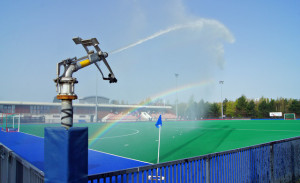 In other parts of the world the entire concept of a club (with teams for young and old, men and women and entire families participating in club life) is unknown. In India for example, as most if not all Asian countries, clubs for sports do not exist. Indian hockey doesn’t have a club competition, it has the tradition of sports at school and it has teams playing for their company or other employer (army, postal services, police, …). And these teams meet in tournaments, not in competitions that last for several months during a year. Lots of reasons exist for these differences, besides obvious cultural differences, distance is often a reason. But another very important reason is infrastructure… The choice for waterbased pitches as the international standard has not made it easier to develop our sport of hockey globally. Water is an issue in most parts of the world, we tend to forget that over here…
In other parts of the world the entire concept of a club (with teams for young and old, men and women and entire families participating in club life) is unknown. In India for example, as most if not all Asian countries, clubs for sports do not exist. Indian hockey doesn’t have a club competition, it has the tradition of sports at school and it has teams playing for their company or other employer (army, postal services, police, …). And these teams meet in tournaments, not in competitions that last for several months during a year. Lots of reasons exist for these differences, besides obvious cultural differences, distance is often a reason. But another very important reason is infrastructure… The choice for waterbased pitches as the international standard has not made it easier to develop our sport of hockey globally. Water is an issue in most parts of the world, we tend to forget that over here…